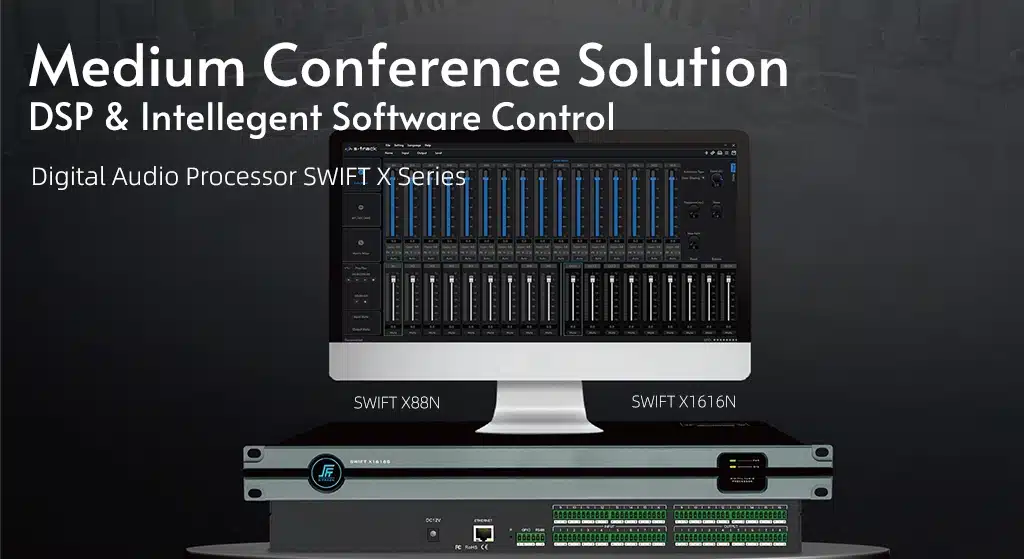Have you ever been in a conference room where the speaker’s voice comes through muffled, buzzing, or even cuts out unexpectedly—despite using high-end audio equipment? The issue often isn’t the gear itself, but a poorly designed acoustic environment.

Here are three common acoustic flaws that undermine speech clarity and how to address them.
What you hear: A persistent rumble or boominess, especially with deeper voices, making speech hard to follow.
Why it happens: Low-frequency sound waves have long wavelengths. In smaller rooms, they reflect between parallel surfaces and create standing waves—areas where sound energy builds up or cancels out. For example, in a 30㎡ room, 125Hz low-frequency sound pressure can vary by more than ±10dB.
The solution: Optimize room dimensions to avoid perfect cubes, and install bass traps or other low-frequency absorbers to smooth out bass response.
What you hear: A faint, delayed repetition of the speaker’s voice, causing distraction and reducing comprehension.
Why it happens: When sound travels from the presenter to a distant wall (e.g., over 17 meters), it can return more than 0.1 seconds later—enough for your brain to perceive it as a distinct echo.
The solution: Rearrange seating or speaking positions to minimize long reflection paths, and add acoustic panels on rear and side walls to absorb delayed reflections.
What you hear: Sound is too loud in the front but too quiet in the back, or seems to “disappear” in certain seats.
Why it happens: When speakers are placed too close to walls, ceilings, or floors, reflected sound interferes with direct sound. This causes phase cancellation—a “comb filtering” effect that weakens or nullifies certain frequencies. Improper speaker aiming also creates uneven coverage.
The solution: Position speakers carefully to minimize reflections from nearby surfaces, and aim them to cover the audience area evenly. Professional tuning ensures sound levels vary by less than 3–6 dB across all seats.

Clear, intelligible audio depends not just on quality equipment, but on a well-treated acoustic space. By addressing standing waves, echoes, and speaker placement, you can turn a frustrating meeting room into a clear-communication zone.

Want to improve your sound of conference room? Contact S-Track today for a professional acoustic assessment and sound system solution.
400-900-2726
9th Floor, 1B, Shangzhi Technology Park, Guangming District, Shenzhen City, Guangdong Province, China
Copyright © SHENZHEN S TRACK SCIENCE TECHNOLOGY CO., LTD